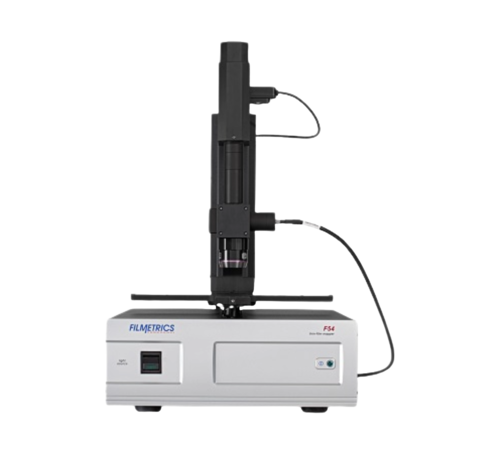Enhance Your Fiber Optic Projects With an Efficient Diameter Analyser
The assimilation of an efficient size analyser into fibre optic jobs serves as a critical aspect in attaining precision and consistency. By helping with precise diameter dimensions, these analysers not just boost the high quality of installations but likewise alleviate prospective compatibility concerns amongst components. The sophisticated capabilities of contemporary analysers simplify information collection and quality control procedures. As we check out the important attributes and advantages of these tools, it ends up being noticeable just how they can transform job end results and make sure adherence to market standards. What stays to be gone over is exactly how to efficiently implement these analysers in your existing operations.
Significance of Size Dimension
Determining the size of fibre optic wires is a crucial job that ensures ideal performance and dependability in interaction systems. Exact size dimension is crucial for different factors, largely for keeping signal stability and lessening loss. A cord's diameter straight affects its capacity to transmit light effectively; deviations from the specified diameter can result in enhanced depletion, which affects the general efficiency of the network.
Furthermore, accurate dimension is essential during the installment and upkeep of fibre optic systems. An improper fit between cords and ports can cause signal degradation or full failing of communication links. By making certain that diameters are within specified resistances, specialists can improve compatibility between elements, leading to enhanced system reliability.
Furthermore, diameter measurement plays a substantial role in top quality control throughout manufacturing. Uniformity in the diameter of fibre optic cords is important for making certain uniform performance across different sets. optical fibre diameter analyser. This consistency assists producers keep market standards and promotes confidence amongst end-users
Features of an Efficient Analyser
An effective analyser for fiber optic jobs must include several crucial features that improve precision and usability in diameter dimension. First of all, high-resolution optical sensing units are necessary for precise diameter analyses, allowing customers to detect also the smallest variants in fibre density. These sensors must be enhanced by innovative calibration systems, making sure regular performance across different conditions and products.
Second of all, a straightforward interface is essential for facilitating ease of operation. This includes intuitive software program that allows for seamless information input and output, along with graphes of the measurements taken. A mobile style improves functionality in numerous area environments, making it simpler to conduct analyses on-site.
In addition, the analyser should support numerous measurement modes, fitting different fiber types and applications. The capability to shop and recover historic information is one more important feature, allowing users to track performance Discover More in time and make notified choices.
Benefits for Fiber Optic Projects
Carrying out a diameter analyser in fibre optic projects supplies substantial advantages that dramatically boost job effectiveness and high quality. Among the key advantages is the capacity to make sure precise dimensions of fiber diameter, which is important for preserving ideal performance in fiber optic systems. Precise size analyses assist in the identification of variances that could lead to indicate deterioration or loss, hence guaranteeing top notch transmission.
Additionally, using a diameter analyser streamlines the quality assurance procedure. By automating dimension jobs, task groups can decrease the time spent on visit here manual evaluations, resulting in faster project conclusion and lowered labour costs. This efficiency additionally enables more strenuous testing procedures, causing improved item reliability.
Furthermore, consistency in fiber diameter dimensions advertises compatibility with other fibre optic parts, minimizing the danger of setup mistakes and improving overall system performance. The unification of a diameter analyser not just help in preserving sector standards but likewise promotes self-confidence in project deliverables.
Integration Into Existing Process
Incorporating a diameter analyser into existing workflows can substantially improve the operational performance of fiber optic jobs. By flawlessly incorporating this technology, teams can accomplish specific dimensions that are vital to keeping the integrity and performance of fiber optic systems. This assimilation permits real-time information collection and evaluation, which can be vital during the manufacturing and setup stages.
In addition, the capacity to automate diameter measurement procedures minimizes the possibility for human error, making sure regular high quality control throughout the job lifecycle. The data generated can be quickly shared across platforms, facilitating collaboration among designers, technicians, and task managers. This ease of access improves decision-making and accelerates task timelines.

Picking the Right Diameter Analyser
When choosing a diameter analyser for fiber optic projects, it is vital to take into consideration a number of vital elements that straight effect measurement precision and functional performance. The resolution and precision of the analyser should line up with the specific needs of your project. Greater resolution tools can find minute variants in diameter, which is vital for ensuring ideal performance in fiber optic systems.
For tasks with tight due dates, a diameter analyser that offers rapid information acquisition can dramatically enhance productivity. In addition, consider the analyser's compatibility with existing systems and software application.
An additional crucial variable is the variety of diameters the analyser can accommodate. By carefully assessing these aspects, you can select a size analyser that boosts the efficiency and precision of your fibre optic tasks.
Verdict
In verdict, the integration of an effective diameter analyser is critical for enhancing fiber optic projects. Specific diameter dimensions guarantee optimal efficiency and dependability while lessening installment errors. Advanced attributes assist in real-time information collection and compliance with market standards, inevitably raising the top quality of deliverables. By prioritizing the choice and execution of a proper analyser, task performance is substantially improved, leading the way for successful outcomes in fiber optic applications.
A cable's diameter directly affects its ability to transfer light properly; deviations from the Visit Your URL defined diameter can lead to increased attenuation, which influences the total performance of the network.

Comments on “Increasing Output Accuracy with an Optical Fibre Diameter Analyser”